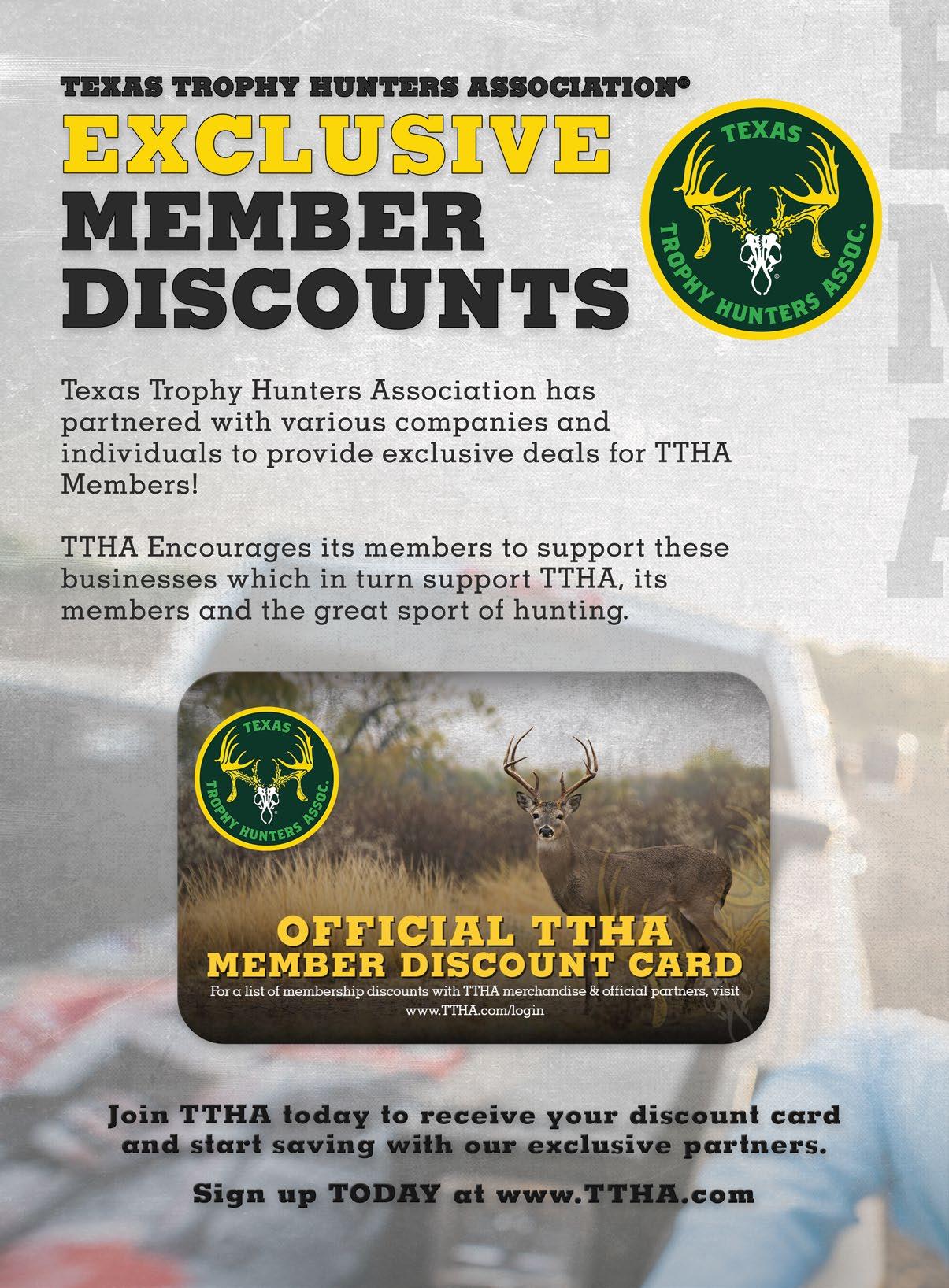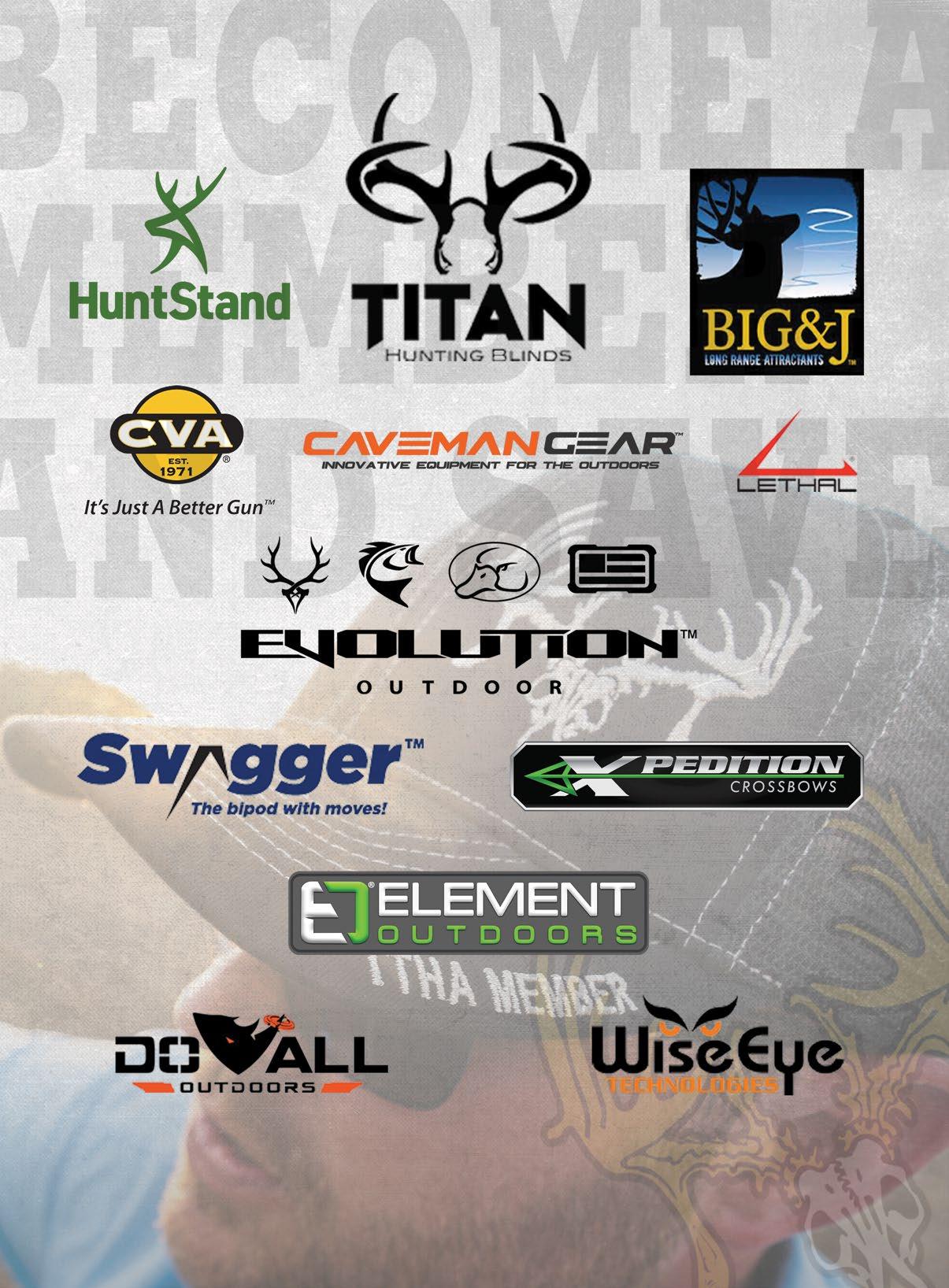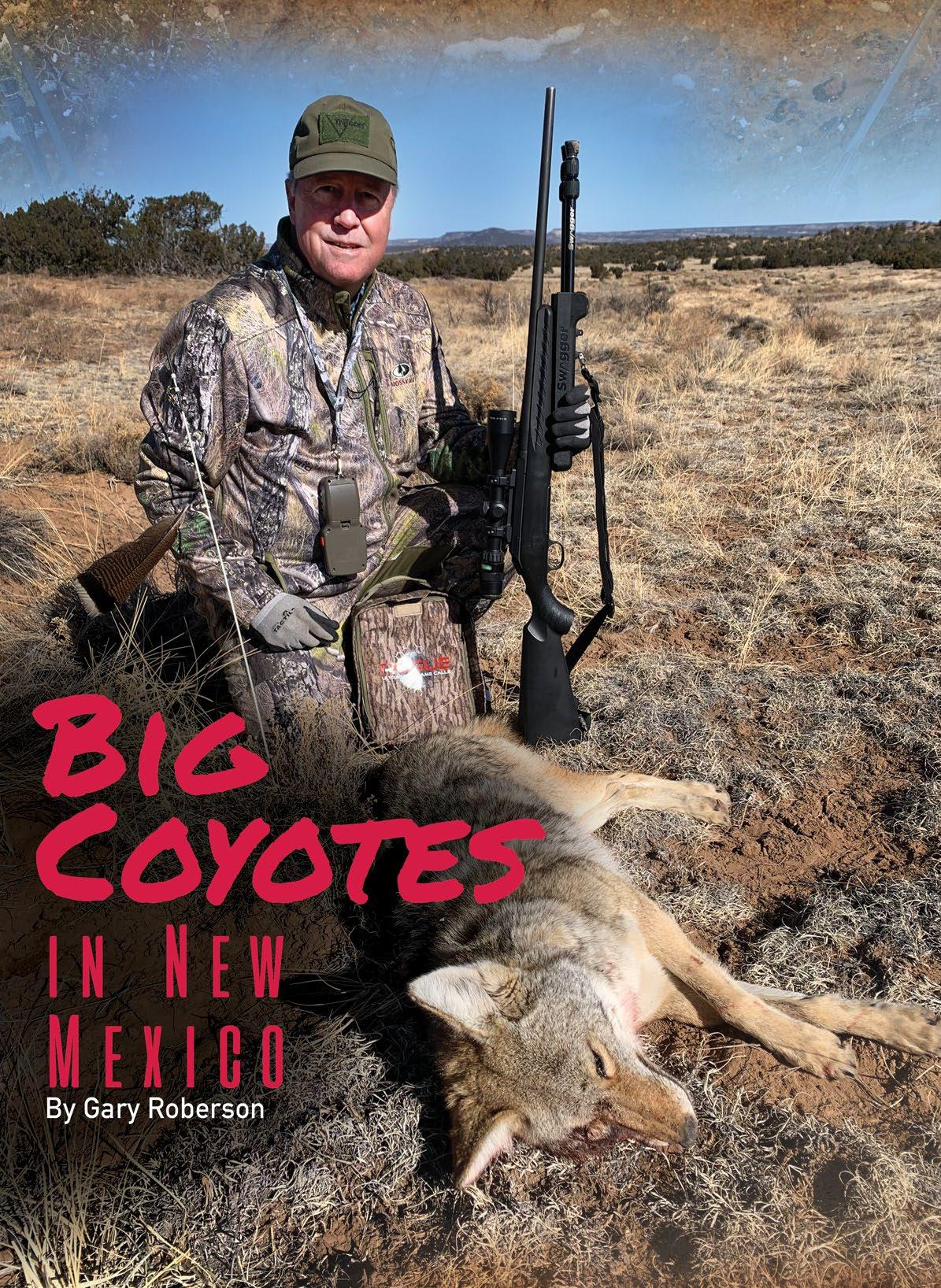
6 minute read
Big Coyotes in New Mexico
Gary called this coyote out of a herd of cattle that were calving. In the big ranch country, he says to find the cows that are calving and you will find the coyotes.
While it cannot be argued that Texas is home to some of the biggest ranches in the country, for its size, New Mexico also has its share. While some of these ranches get a little income from deer or elk hunting, by far, the majority of revenue comes from cattle, which is opposite from Texas. New Mexico coyotes are typically larger than their Texas cousins and the open terrain doesn’t offer as large a food source from rodents and other small game, causing them to depend more upon livestock for survival. For this reason, ranchers in New Mexico are more concerned with coyotes and the need for predator control, which makes it much easier for me to gain access.
Once a hunter gains permission to hunt on a ranch, he or she must produce, or the ranch will find some other means to control the predator populations. I do my best work when the rancher turns me loose and allows me to scout and hunt at my own pace. In order to maximize my efforts, I want to carry the best equipment to increase my chances of making as many clean kills as possible. This means an accurate, nimble, flat-shooting rifle with clear, bright and rugged optics with bipods or shooting sticks to give me a stable rest. I prefer rapidly expanding bullets that expend all their energy within the predator’s body, making for quick and clean kills. I want camo that blends well with the open landscape, which is typical of most of the large cattle ranches.
Perhaps the most important tool in luring a predator into killing range is the call producing the distress sound. While I am a huge fan of using hand calls, they cause the predator’s attention to be directed to the source of the sound and this can be a problem in this extremely open terrain. For this reason, I believe that having an electronic caller operated remotely from 50 to 75 yards away can be more effective.
Calling in this vast rolling terrain is the almost the opposite of hunting the brush country where I grew up. In South Texas, the greatest challenge was finding a spot large enough to set up where you could kill a coyote. Hiding the pickup was never
Gary prefers to use an accurate, nimble, flat-shooting rifle with clear, bright and rugged optics.
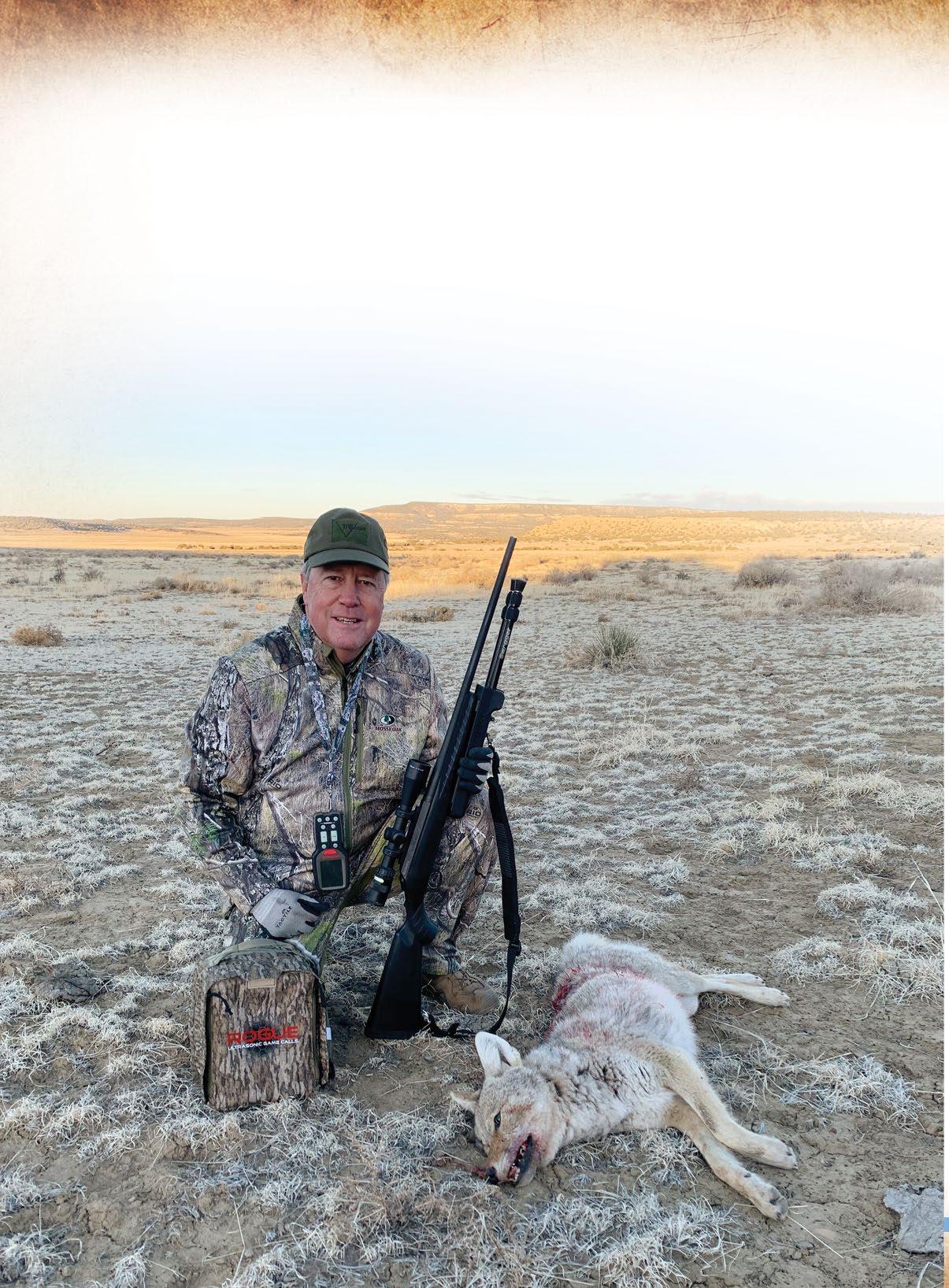
a problem. In New Mexico, however, you can stand in one spot and see several hundred yards in every direction, but it is almost impossible to hide the truck.
On the very first call my partner and I made on the western New Mexico ranch, a coyote rolled over a low hill 90 degrees to the right. From where he stood, he could see the pickup parked 100 yards behind the low hill to our back and shied off.
The second call of the morning, I played the “Killer Cottontail” on the Rogue caller for over 10 minutes and when nothing responded, I played a coyote howl and several coyotes answered from about a half-mile to the northwest.
I switched to a pup distress sound and saw a white speck moving on a far ridgeline. I raised my rifle to confirm that it was indeed a coyote and found two more coyotes trotting in my direction. As they rolled off the ridge, two more appeared, making a total of five.
When I set the call out, I felt a slight breeze in my face, so I was not concerned about the coyotes winding me. When the pack was just over 200 yards out, I saw the lead coyote whirl and I knew the wind must have shifted in the 15 minutes since my partner and I began calling. Though the lead one shied, he didn’t run straight away, but began making a wide loop to my right. I guess the realistic sounds produced by the Rogue were just too good to totally abandon.
The pack showed itself off and on as they continued to move around our location. Finally, my partner was able to kill one after they had moved completely behind the hill we sat on. From two stands and calling in six coyotes with only one dead, that isn’t a performance I am proud of.
The next morning the wind died down, but the temperature was 14 degrees, and the sun was breaking clear. I would not need as much volume because the sound would be carrying much farther than normal. I pulled through a ranch gate where I was able to hide my pickup behind a small hill and walked in a southwesterly direction towards a small juniper to hide the camera and Steve to some degree, but nothing to hide an old coyote hunter. Since I would be sitting basically naked, I decided that I best set the caller at least 50 yards away and use the turkey tail feather to draw additional attention to that location.
Five minutes into the call, I heard Steve whisper something and as I slowly turned, I saw a huge male coyote trotting in as I looked over my right shoulder. With my rifle sitting on my bipod over 100 degrees away from the target, I knew the coyote had me because I had nothing to hide my move.
When the coyote was 90 degrees to my right and less than 30 steps away, he saw an old man wearing camo sitting in the middle of the prairie. Luckily, the sun had just popped over the horizon and he looked almost directly into it. The big coyote
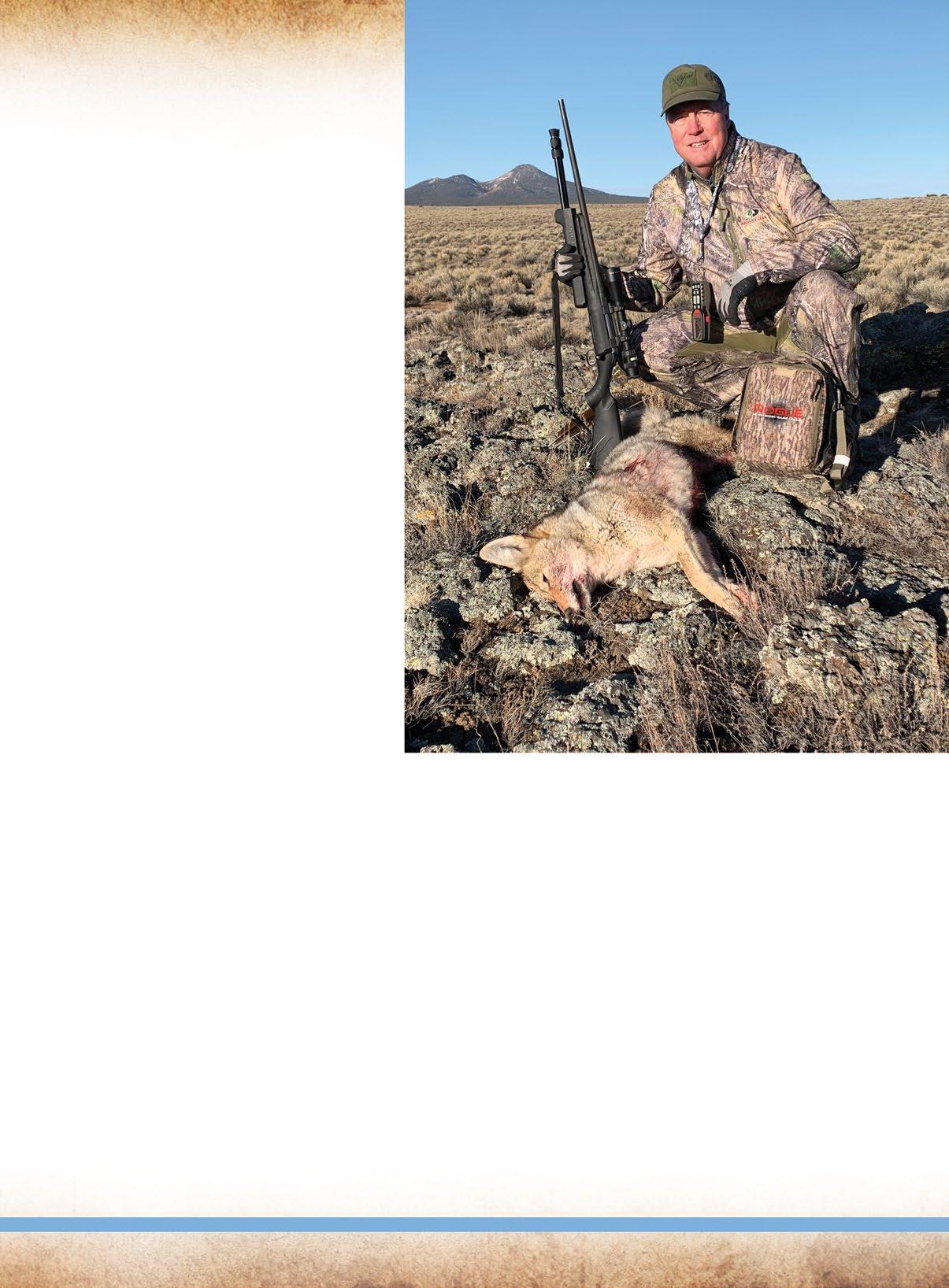
Gary believes the most important tool in luring a predator into killing range is the call producing a distress sound.
shied off about 10 steps, but I managed to click the call back on, stopping his retreat. It was then I witnessed something I have never seen before. The coyote began softly barking and then pawing the ground in an attempt to bluff me. Looking back and forth from the Rogue to me, I began to slowly move my rifle to the target. After what seemed an eternity, I finally had the crosshairs on the coyote and squeezed the trigger. The old coyote easily weighed over 40 pounds and his face showed signs of more than one battle. From the wear on his extremely heavy canines, I would estimate him to be 6-7 years of age. A baby calf would be no match for this alpha male. The next morning started off much the same as the day before. After the first series, I saw a coyote swinging a little wide at over 500 yards as she made an arching move to the call. Just before I took a shot at her, a motion to my right at about 25 steps revealed a male coyote perhaps even larger that the one I had killed the day before. Unfortunately, he had already busted me, so I finished off the female standing just beyond the caller. I am not sure if it is the big coyotes or the love of hunting on these big ranches that causes New Mexico to be one of my very favorite places to hunt coyotes.
